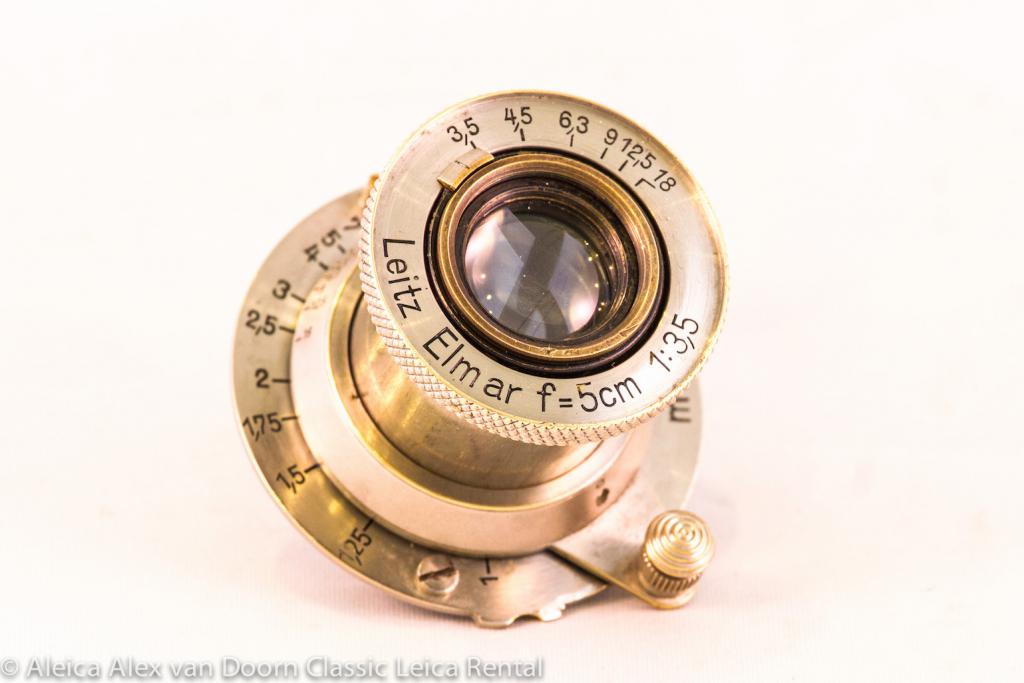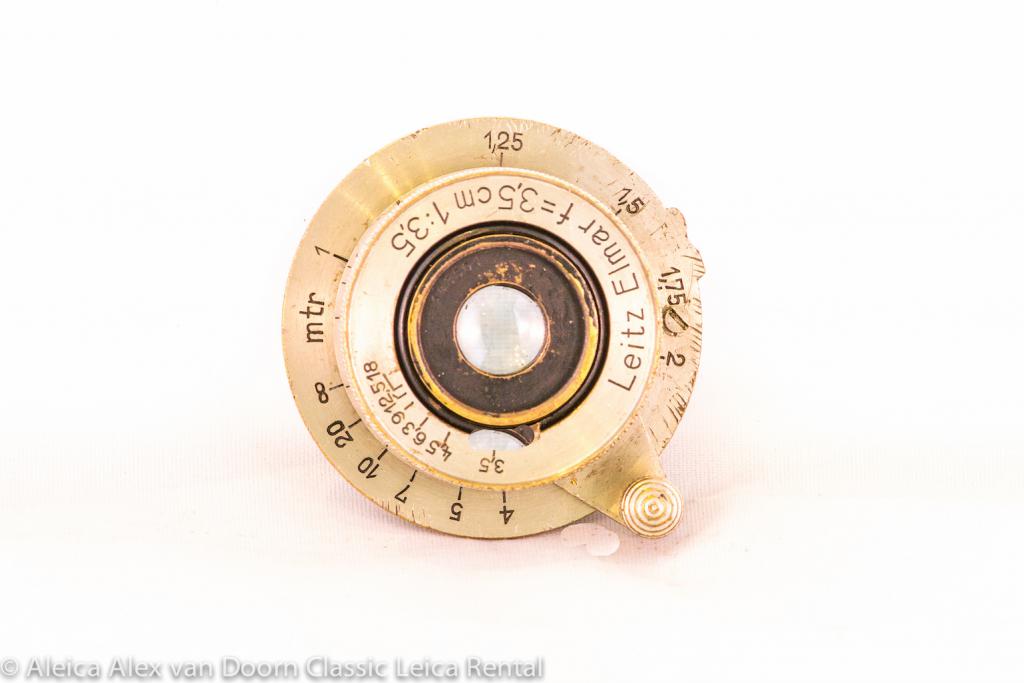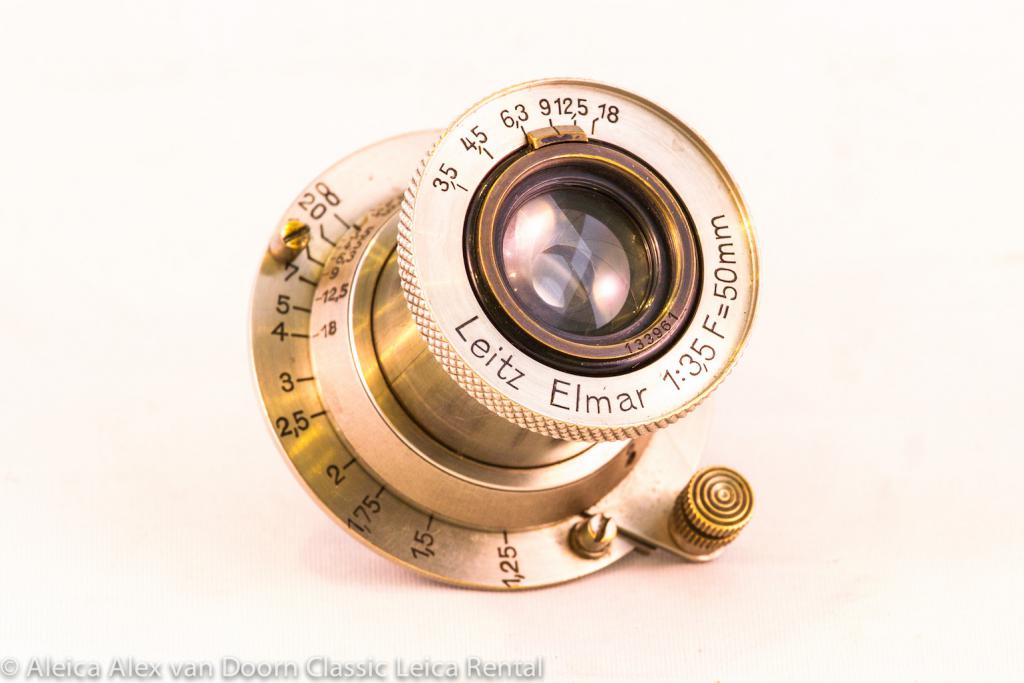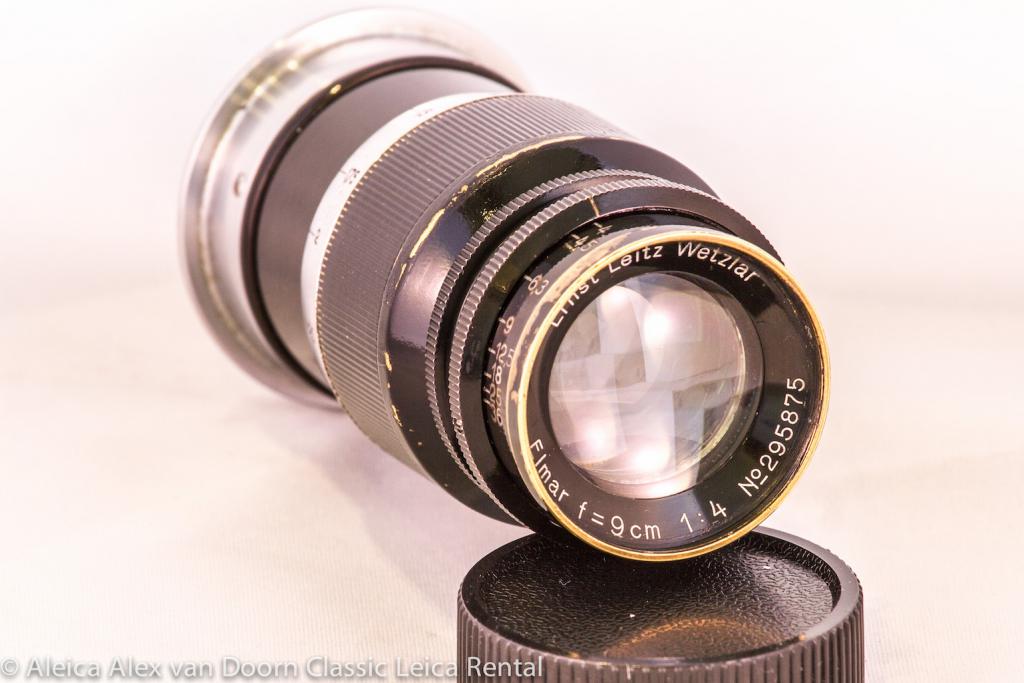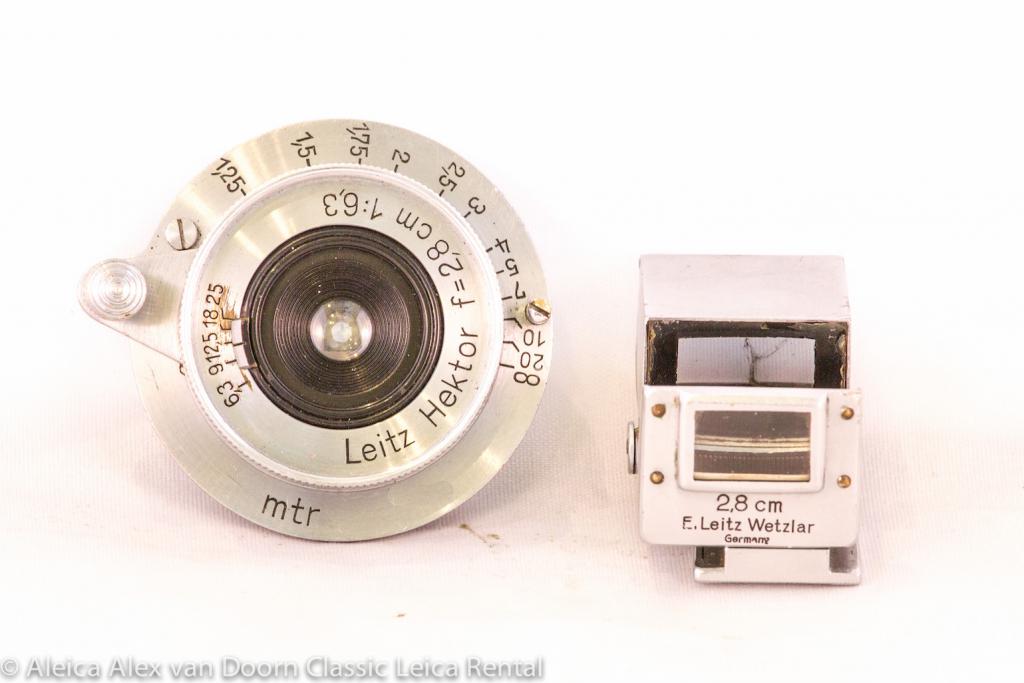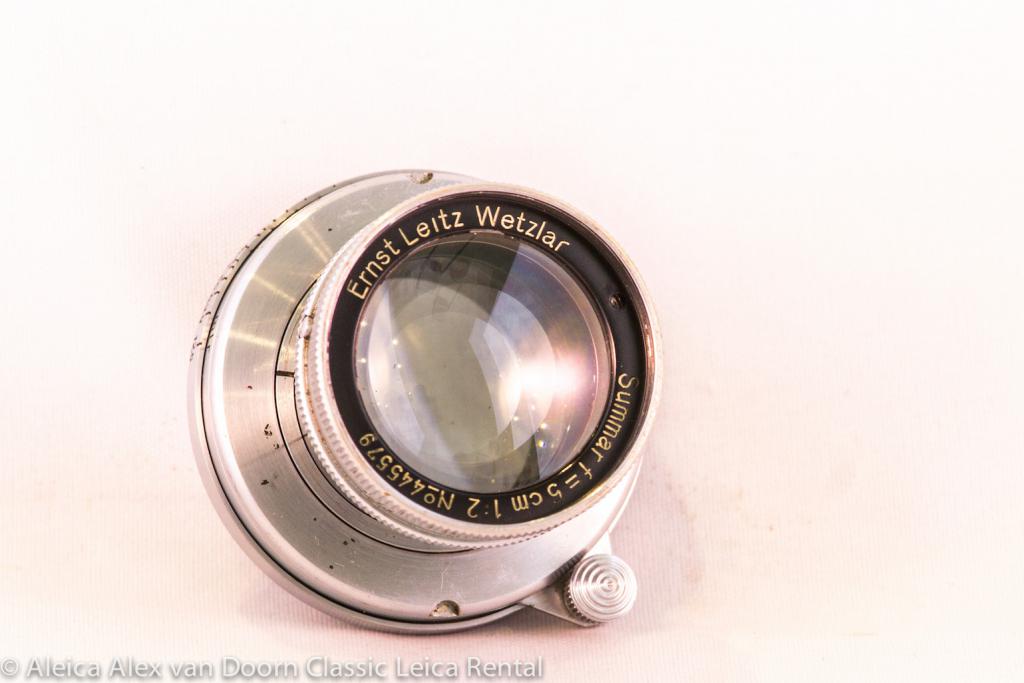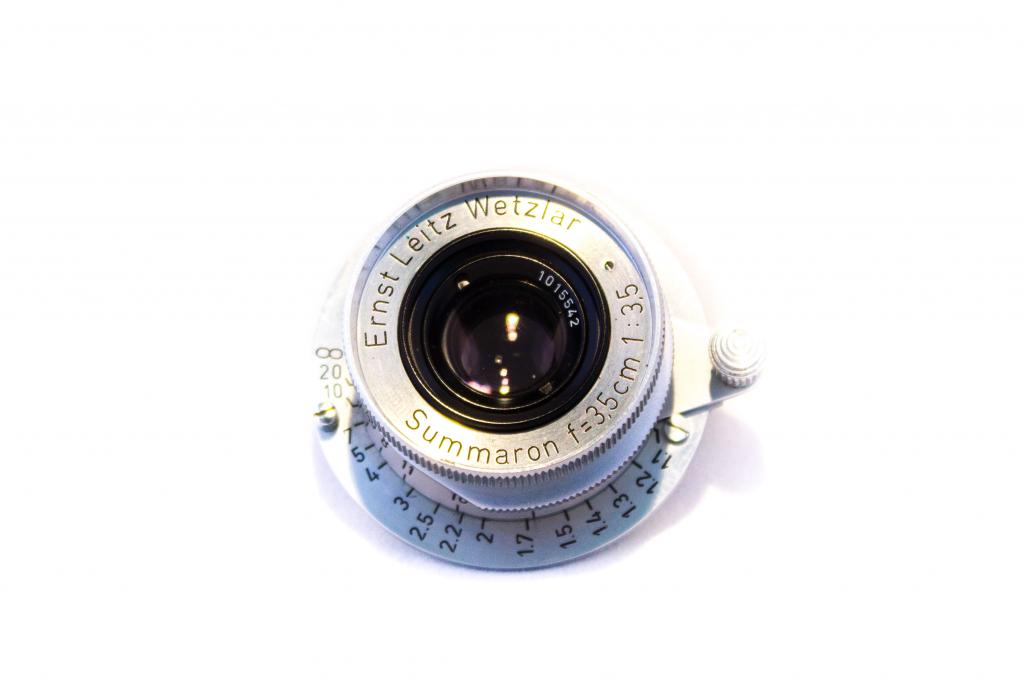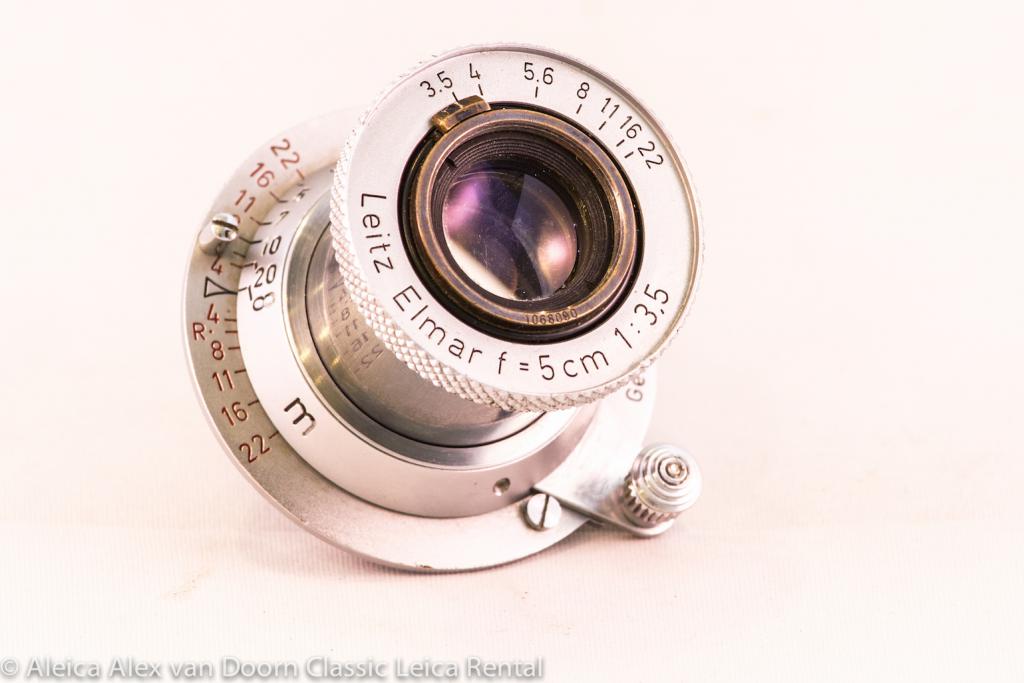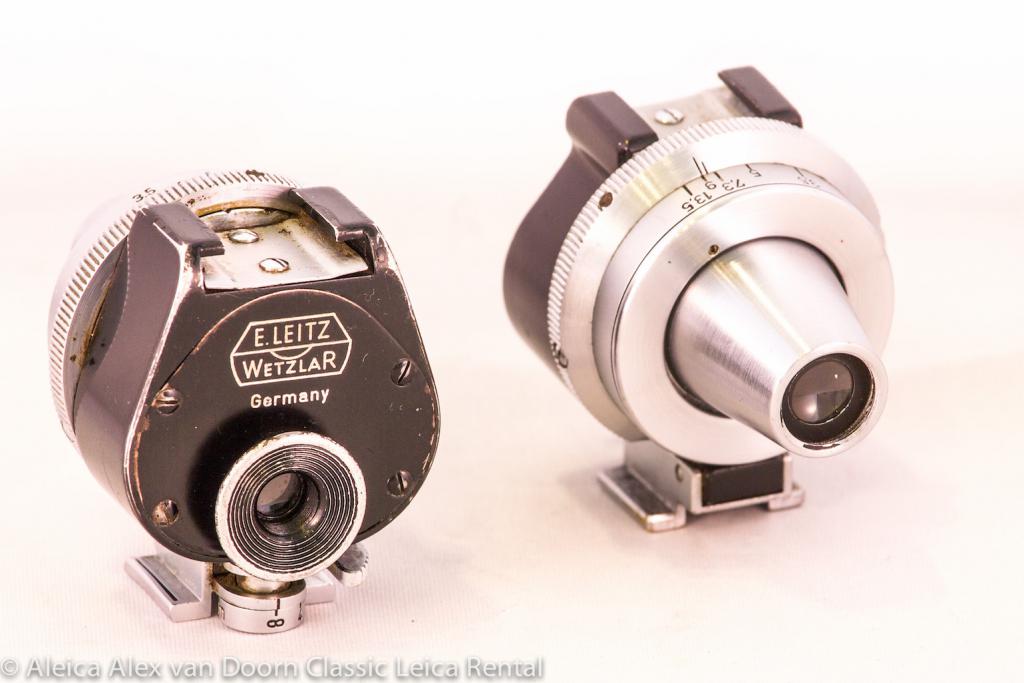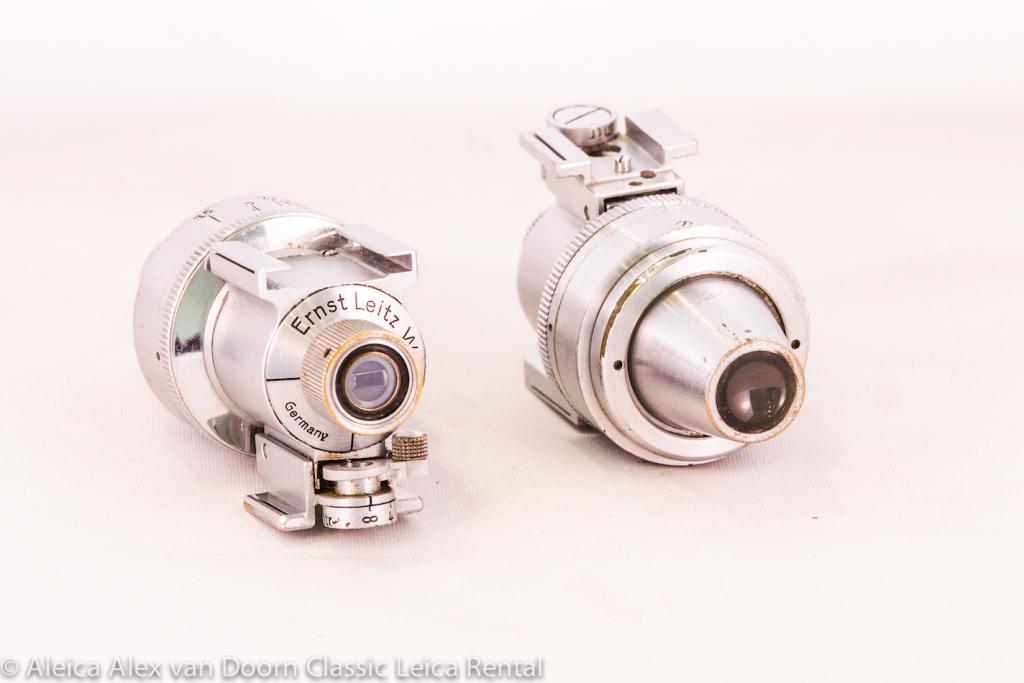Lenses & Accessories
Here comes the text about lenses.
Elmar f=5cm 1:3,5 serial number 65765
Productionyear: 1930Dr. Max Berek has calculated this lens specifically for the 35 mm film format. The lens is made of 4 lens elements in three groups. Leitz produced 379.000 of these lenses in the period 1925 to 1962. The lens has been made in many different versions. Also for the later Leica M bayonet mount cameras.
The lens is distortion free. Characteristic fingerprint of the Elmar is the good sharpness in the middle, and some softer outer parts of the field.
The optimum apertures are 8 and 11 for this famous lens. Use of a sun shade is strongly advised to prevent flare.
This particular lens has no visible serial number. Not until 1930 Leitz started to give the lenses an external serial number.
In using this lens take care to fully extent the lens and then lock it.
Elmar 3,5 cm 1:3.5 serienummer 143501
Productionyear: 1932Leitz started the production of this Elmar wide-angle lens in 1930 for the Leica 1 Type C. The first lenses have been calibrated for a specific camera. The last 3 digits of the camera’s serial number were engraved in the lens barrel.
The lens sold very well in the beginning. This also was caused by fact that it had a greater depth of focus than the 5 cm standard lens. As the Leica 1 Type C had no rangefinder it was easier to make sharp instant pictures.
The camera with this little lens could be easily stored in the inner pocket. The performance is comparable with the 5 cm Elmar: sharp in the middle and softer in the outer parts of the field. Wide open the contrast is low, but this improves after stopping down. Best aperture is 5,6. The performance of this lens is that good that finer detail can be recorded to the limit of the film emulsions in those days.
Watch out for direct sunlight in the lens as these lenses are quit prone to flare.
For framing the picture one needs a separate (universal) finder. This will be supplied with the lens.
This lens with serial number 143501 is a nickel version from 1932.
Elmar f=5cm 1:3.5
Productionyear: 1932Dr. Max Berek has calculated this lens specifically for the 35 mm film format. The lens is made of 4 lens elements in three groups. Leitz produced 379.000 of these lenses in the period 1925 to 1962. The lens has been made in many different versions. Also for the later Leica M bayonet mount cameras.
The lens is distortion free. Characteristic fingerprint of the Elmar is the good sharpness in the middle, and some softer outer parts of the field.
The optimum apertures are 8 and 11 for this famous lens. Use of a sun shade is strongly advised to prevent flare.
This particular lens is a nice nickel version from 1932.
In using this lens take care to fully extent the lens and then lock it.
Elmar f=9cm 1:4
Productionyear: 1936Leitz sold some 175.000 Elmar 9 cm lenses throughout the years. It was manufactured from 1931 until 1964. Admittedly in many different lens mounts, but always with the same optical cell: 4 lens elements in 3 groups. It is the same layout as the 3,5 and 5 cm Elmars, but sharper over the whole field. Best performance of the lens is at 8 – 11. Today this is quite compared to present 90 cm lenses.
This lens dates from 1936.
For focussing the rangefinder can be used build in (Leica II) or the separate rangefinder (Leica 1 Type C). For framing the picture one needs a separate (universal) finder. This will be supplied with the lens.
Hektor f=2,8cm 1:6.3
Productionyear: 1938At the time of introduction this lens was a milestone for Leitz. This is a real wide-angle lens. It was a low speed lens with a maximum of 1:6,3. This maximum opening still delivers little contrast. This improves very much when stopped down to f: 11. Depth of focus is very big at this aperture and it is easy to photograph without focussing. The glass of the lens is very small and total thickness of the lens is even less than the 1,5 cm Elmar.
The lens is delivered with its own specific finder. There is a crack in the glas of the finder, but in actual use this is hard to see. A very clear little finder.
I use it a lot on my digital Leica M.
Summar f=5cm 1:2,0
Productionyear: 1938The Summar is the first fast lens and its maximum aperture is 1:2,0. Leitz introduced the lens in 1933 in a nickel version. It has 6 lens elements. This great number of glass to air surfaces is the reason that the contrast is lower then the simpler Elmar lenses. Best performance is at f:5,6 to f1:8. It is better not use the lens in backlight situations.
In using this lens take care to fully extent the lens and then lock it.
The lens stayed in production until 1940.
Summaron f=3,5cm 1:3,5
Productionyear: 1953This coated wide-angle lens is a post war design. The lens was manufactured between 1948 and 1960. This specific serial number was produced in 1953. In total 120.000 copies of this lens have been manufactured. Many more than the predecessor Elmar f=3,5 1:3,5 (More than 42.000).
The optical characteristics are: vignetting is 1.6 stops wide open and there is no distortion. The lens is rated as very good even by todays standards. Wide open the zonal areas are a bit soft, but already stopped down to 1:5,6 it delivers excellent image quality. The coating takes care that flare is quite well under control.
.
Elmar f=5cm 1:3,5
Productionyear: 1953Dr. Max Berek has calculated this lens specifically for the 35 mm film format. The lens is made of 4 lens elements in three groups. Leitz produced 379.000 of these lenses in the period 1925 to 1962. The lens has been made in many different versions. Also for the later Leica M bayonet mount cameras.
The lens is distortion free. Characteristic fingerprint of the Elmar is the good sharpness in the middle, and some softer outer parts of the field.
The optimum apertures are 8 and 11 for this famous lens. Use of a sun shade is strongly advised to prevent flare.
This particular lens is a later chrome version from 1953. This lens is a coated one with the advantage that is has more contrast and less flare. Leitz only started coating its lenses after WWII.
In using this lens take care to fully extent the lens and then lock it.
Universal viewfinder correct image (Imarect)
Productionyear: onbekendEvery screw mount Leica’s is equipped with a finder that displays the image of a 5 cm lens. For all other focal lengths a separate finder had to be used. Leitz made many finders for specific focal lengths, but also a number of universal finders. This type that has been produced between 1939 and 1963 has a double prism mechanism, which gives it the correct image. This type has settings for 3,5, 5, 7,3 (or 8,5 cm), 9, 10,5 (only on early models and 13,5 cm.
The finder has a parallax correction mechanism in that the viewer tumbles a bit for shorter focus distances. Therefor this viewfinder is also useful for 5 cm lenses.
Universal viewfinder mirror image
Productionyear: onbekendEvery screw mount Leica’s is equipped with a finder that displays the image of a 5 cm lens. For all other focal lengths a separate finder had to be used. Leitz made many finders for specific focal lengths, but also a number of universal finders. This early type has settings for 3,5, 5, 7,3, 9, 10,5 and 13,5 cm.
This version type renders a mirror image. For portrait pictures a knob on the back f the finder has to be turned.
The finder has a parallax correction mechanism in that the viewer tumbles a bit for shorter focus distances. Therefor this viewfinder is also useful for 5 cm lenses.
